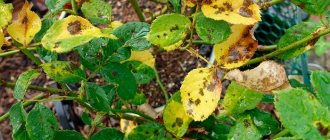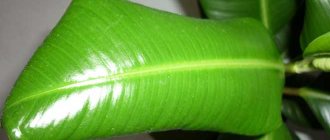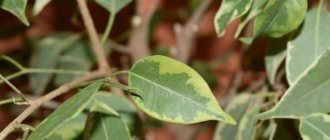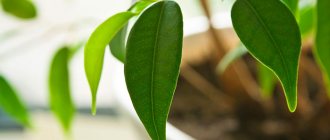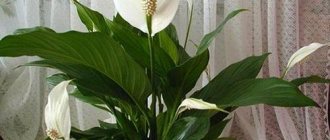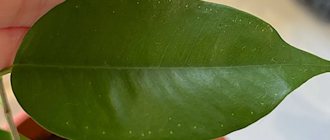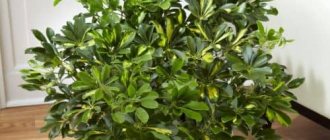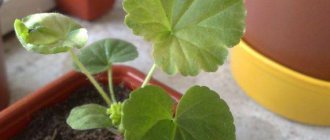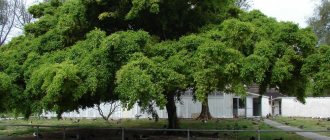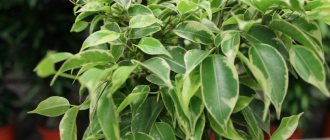If the leaves of the ficus benjamina turn yellow and fall off, few people know what to do. This is the main question that puzzles flower growers who have this beautiful, decorative foliage flower at home. And there is a plant in almost every home and in many offices, cafes, and shopping centers. Its external qualities are excellent; an expressive, laconic plant fits into every interior. However, the flower will need careful care, which will ensure its full growth and development. The most popular problem - yellowing and falling leaves - is discussed in detail below.
The main reasons for dropping ficus leaves
Drafts, constant plant movements
Each plant has its own ideal conditions for normal growth and development, for example, ficus Benjamin does not tolerate drafts, dampness and darkness, it is difficult to move, even if it is moved within the same room, this can affect it. This ficus is very sensitive.
Incorrect room temperature
The temperature regime that will be most suitable for such a plant is +25 degrees in summer and +16 degrees in winter. The minimum temperature at which it will not die is ten degrees above zero. It is imperative to ventilate the room with the plant, but so that drafts do not form.
Humidity and its effect on ficus
As for the room humidity, a dry climate is in no way suitable for the Benjamin ficus, it will begin to turn yellow, the optimal room humidity for the best growth of the ficus is 70%, the minimum permissible room humidity is somewhere around 50%.
Incorrect care of leaves
An important step in plant care is the shower. Ficus foliage needs to be bathed periodically, this is easy to do - take the plant to the bathroom, cover the ground under it with something and generously sprinkle it with warm, not cold water, but do not rush to take it out of the bathroom if it gets into a cold room, becomes hypothermic or falls under draft, then its leaves will begin to wither and fall off.
Insufficient or excessive watering
Proper watering of ficus Benjamin is to water it with clean water, settled or pre-boiled, and after settling, it should be watered not with cool water, but with lukewarm water. You can also add fertilizers to the water for better plant growth. Watering the ficus should be carried out in several stages, pour water two or three times, do not pour too much, frequent watering will also do harm, be guided by the soil in the pot, when it is dry - then water it, if there is constant moisture there, then the roots can start disappear. Be sure to have a hole in the flowerpot to drain excess moisture; never plant ficuses in pots with a solid bottom without holes.
Too bright or too dim lighting
Ficuses are very light-loving plants, in direct sunlight the flower will not feel comfortable - it will turn yellow, but in the shade it will completely disappear, the fact is that the plant needs light to maintain the health and color of the leaves, sunlight will give variegated or plain leaves a brighter color, but the shadow will discolor, the leaves will begin to wither. Variegated flowers are more sensitive to shadow than monochromatic ones, but both need light. During the cold period, when the sun is not active and emits a minimum of light, you can use special lamps; light is the main condition for beautiful leaves.
Disruption of plant life processes due to transplantation
The tree should be replanted once every two years; this is the optimal period, during which time the roots of the plant will completely entwine the soil in the pot. The replanting process is as follows: the ficus is removed from the old pot, the excess layer of soil is shaken off, it is placed in a new larger pot, a drainage layer is poured onto the bottom of the new flowerpot, and soil is placed on top of it. If there is a distance in the flowerpot between the plant and the walls of the pot, then fill the void with soil and fertilizer; be sure to water the plant at the end of replanting.
Parasites and pests
The most difficult problem to overcome may be ficus disease due to pests - thrips, spider mites. These parasites kill the plant, its leaves may begin to turn yellow and fall off, or even drop its leaves completely. To prevent the appearance of such “neighbors,” you need to use special preparations, spray the plant with them, then bugs will definitely not start living on it. Parasites with their vital activity can cause the appearance of fungus on the Benjamin ficus, it can be defeated with folk remedies, the place where the new formation has appeared must be wiped with an infusion of garlic, it will not allow the fungus to spread, but will also completely kill it.
[ads-pc-1]
Preventive measures: what to do to prevent leaves from falling
Carefully care for your Ficus Benjamin so that you don’t have to wonder later why the leaves are falling and what to do. The appearance and health of the flower depends on proper care.
- Place the pot with ficus away from windows and balconies: due to drafts, the plant may begin to shed its leaves.
- Reduce winter watering if the room temperature is less than 10 degrees Celsius.
- Maintain a temperature of 20-25 degrees in spring and summer, 16 in winter.
- Refresh the foliage regularly by spraying or wiping it with a damp sponge.
- Place the flower pot in a place with sufficient lighting, away from direct sunlight. The best option is the eastern side of the house.
- Replant a young plant annually, an adult plant every few years.
- Before watering, loosen the soil so that the moisture is evenly distributed over the ground.
- Use only a high-quality mixture enriched with nutrients to grow a flower. Apply fertilizer as needed.
Why else can ficus benjamina leaves fall?
Ficus benjamina leaves sometimes dry out, turn yellow and fall off due to a rotten root system. Remove the ficus from the flowerpot to test this assumption. If the roots resemble slippery gray threads, trim them. Also remove dried and dead roots.
Soak the root system in a solution of potassium permanganate, then wait until the cut dries and coat it with charcoal powder, foundation or ground cinnamon. Replant the ficus benjamina in new soil and water it sparingly for the first few days.
We hope our article helped you understand why ficus benjamina leaves dry out and fall off and what to do about it. All a house plant needs is care and careful care, and then it will delight your eyes with its healthy, attractive appearance for a long time.
How to return a ficus to a healthy state if problems arise?
Any problems that may arise with Ficus Benjamin are always caused only by improper care; you should carefully study the information about this plant before buying it so that no problems arise during the growth of the tree. It is advisable to buy it in the warm season, so it will be easier for him to adapt to new conditions.
The main thing you need to know is that ficus does not like moving and has a hard time with changing places. It needs a temperature from 16 to 25 degrees, the humidity in the room should be from 50% to 70%, it needs to be watered when the soil in the flowerpot dries out, and watering is carried out only with warm, settled water.
The flower is sensitive to light and shadow, it is light-loving, but should not stand under the direct rays of a light source; if not cared for properly, it can develop parasites, which must be immediately combated with medications.
Other Possible Problems
How to feed ficus benjamina at home
It happens that there are no noticeable reasons, but the ficus still sheds its leaves, what to do in this case? The soil has probably become alkalized. This is also due to improper watering. If water does not come out of the drainage holes when watering, it means that watering is insufficient, and the remaining salts settle in the substrate. If the flower is watered with plain tap water, alkalization occurs even faster. Watering only with soft, settled water in two steps will help to revive the ficus and prevent such a problem: first water the flower a little, and after 30-40 minutes. water again, but more intensively.
Note! Another reason may be improper feeding or its complete absence.
To prevent a flower from shedding its leaves, you need to eliminate the cause of this, but find it even earlier. Most often, the problem turns out to be on the surface; you just need to build the right care regime for Benjamin’s ficus. It is important to pay attention to this beautiful flower, in return it will give you a healthy appearance that will last throughout the year. Any interior in which Benjamin's ficus will be located will be transformed and sparkle with new colors.
Diseases and pests (treatment)
On the life path of a flower, obstacles periodically arise, manifested by viral and fungal types of diseases that can damage the greenery and root structure. The following hazards are recognized.
Sulfur rot is a type of mold on leaves and stems that tends to fly into the air when shaken. The affected parts become covered with brown spots, followed by complete darkening and falling off.
Regular ventilation will help prevent fungus that develops in warm, humid climates. In case of damage, diseased fragments are removed at the first signs of disease, healthy ones are treated with fungicides. Late detection means certain death of the plant.
Sooty fungus is a consequence of the activity of harmful insects in the form of a black coating on the leaves.
Powdery mildew - the leaves acquire a white coating similar to flour. The development of the disease can be easily eliminated by wiping the plant with a soap solution. In a neglected state, diseased leaves are removed, healthy ones are treated with fungicides in several approaches.
Cercospora - develops in excessively humid air from the "cercospora" fungi. Brownish or black dots appear on the inside of the leaves, increasing in size over time. The fungus causes yellowing and falling off. Treatment involves complete removal of infected leaves and treatment with antifungal agents. Otherwise, the plant faces death.
Anthracnose - the edges of the leaves are affected by rusty spots that turn into ulcers. The leaves begin to die. To cure, damaged greenery is removed and the plant is treated with fungicides.
Root rot is a consequence of excessive watering. The root system is deeply affected and is subsequently unable to provide the plant with sufficient nutrition, leading to inevitable death. It will not be possible to save the ficus. To prevent root rot, maintain moderate watering. For prevention, water monthly with a weak solution of manganese.
In addition to unpleasant diseases, ficus trees can be attacked by harmful insects. Particularly dangerous are their sticky secretions, which create ideal conditions for the development of fungi. Common ficus pests:
Scale insect - feeds on ficus juices and forms a sticky coating. The first sign of scale insects appears as brown spots with a convex structure on the back of the leaf; less often, spots affect the stem. For treatment, thoroughly wash all areas with soapy water and treat with Actellik three times for 3 weeks.
Mealybug - drinks leaf juices, causing the leaves to stop growing and become deformed. To get rid of scale insects, the leaves are mechanically cleaned (pay special attention to the sinuses) and treated with a soap solution once a week. In advanced situations, spraying with Confidor is used with an interval of 10 days.
Spider mites - multiply rapidly, leaving behind gray or brown spots. The leaves wither and dry out. Treatment consists of wiping with soapy water. Humidifying the air and spraying the plant will prevent the appearance of insects. If the mite is widespread, the plant is treated with “Insecticide” and covered with polyethylene.
Thrips are small black insects that cling to the inside of the leaf. They actively reproduce at high temperatures, leaving white and yellow spots on the leaves, which subsequently dry out and fall off. Special chemical preparations “Tanrecom” or “Aktara” help fight thrips.
Aphids – contribute to yellowing and deformation of leaves, followed by falling. The first sign of aphids is the appearance of sticky secretions. If detected, the plant is immediately washed with soapy water and treated with insecticides. Ignoring aphids will result in the death of the flower.
Why did the ficus leaves begin to turn yellow and fall off?
There can be many reasons for yellowing ficus leaves. Any external factors that do not coincide with the optimal growing conditions for this tree can cause this problem. It is worth noting that in its natural environment the ficus is much larger in size, so it copes with a number of problems more easily.
In an apartment it may turn yellow due to the following factors:
- improper watering;
- temperature violation;
- exposure to dry air;
- incorrect transplantation;
- land depletion;
- lack of light.
These are the main reasons that are worth considering in more detail.
Ficus benjamina variety
Ficus plants have long attracted breeders; thanks to their work, today there is a wide variety of varieties of evergreen representatives of the flora to choose from for home cultivation. In addition to plants with classically even green leaves, experts have developed a number of varieties with a spectacular variegated form.
Their leaves are large in size and presented in a chaotic manner in all shades of green, with an admixture of white and pink tones. Basically, pink-purple reflections are clearly visible on young shoots of just opening leaves; as the foliage grows, a similar color disappears.
A large number of low-growing varieties have been bred for home cultivation, characterized by a compact crown and small decorative leaves. The most famous varieties of Ficus Benjamin are:
- Anastasia - distinguished by the evenness of the leaves of a rich dark green color with a characteristic light-colored stripe along the edge, the main vein is colored light green.
- Barok - is a branched bush with small, twisted, light green leaves.
- Danielle - medium-sized leaves of dark green color with gloss, the edges are mostly smooth, slightly curved.
- DeGantel - with thin tall branches, white-green foliage, with a pronounced predominance of white.
- Exotica - thin branches with rather large dark green leaves with partially wavy edges.
- Golden King - medium green leaves edged with white.
- Natasja is a dwarf variety with small leaves of bright green color. The internode is shortened, with a rather dense crown.
- Regidan - light green leaves with chaotic patches of dark green spots starting from the center.
- Starlight – the color of the leaves is dominated by a cream shade with dark green spots.
- Wiandi is a variety with an original twisting trunk, reminiscent of bonsai style. The leaves are small, dark green.
Anastasia
More often, the tree-like variety of evergreen tree is used in landscape design as tapeworms - free-standing units that perfectly landscape a garden plot. Young trees or shrubs look organic next to flower beds, complementing the composition.
In addition to Ficus Benjamin, many other attractive varieties have been bred for home use, impressive in various shapes and colors. Here are the most popular ones:
- Abijan is a variety with large, dense leaves. Young plants are burgundy, but as they mature they acquire a rich dark green color.
- Belize - wide oval leaves, with a variegated color of light and dark green spots in the center, with cream and pink tones along the edges. Dark green stem with a characteristic shade of burgundy.
- Burgundy - large oval-shaped leaves. The outer side of the leaf is dark green, the reverse is colored with a mixture of cream and green shades. The main vein is colored red.
- Melany – the leaves are large, but the variety is quite compact. The color is dark green with a pronounced gloss, with a reddish tint along the top.
- Robusta - with large shoots, wide oval-shaped green leaves.
- Sylvie - wide leaves with light and dark green colors in the center, with a delicate cream stripe at the edges.
- Tineke is a large-leaved variety with a predominance of dark green in the central part and interspersed with lighter tones, with a cream border;
There are a number of tree varieties that are unpretentious for home cultivation:
- Bengal - with a branched trunk and large smooth leaves.
- Lyre-shaped - with a straight trunk and branched crown. The leaves are leathery, dark green and lyre-shaped.
- Blunted is an original variety with a thick, uneven trunk, reminiscent in appearance of Ficus Benjamin. It is distinguished by horizontal shoots and dense foliage.
- Variegated varieties of a tree species have also been developed, developing in the form of creeping shrubs - an ideal decoration for vertical surfaces.
- “Tiny” - this species spreads with long thin shoots, the leaves are small, asymmetrically shaped, rich green in color; with age they become oval and rigid in structure.
The most common varieties:
- Curly - a creamy white stripe stretches along the entire vein, bordered at the edges by dark green.
- Dorte - green leaves with golden flecks.
- Sunny - small, green in color, with creamy uneven spots along the edges.
- White Sunny - rounded leaves of a dark green color, completely bordered by wide creamy white stripes.
- Green Sunny - the leaves are characterized by a monochromatic green color in dark tones.
